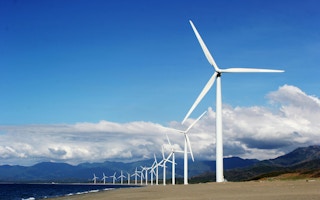The pledges made at last year’s United Nations Climate Change Conference (COP28) in Dubai reflect the growing political will to tackle climate change head on and in an equitable way. But while governments are taking the lead in accelerating the green transition, they cannot finance it alone. Fortunately, the appetite for sustainable investment is greater than ever: environmental, social, and governance (ESG) assets are expected to reach $50 trillion in 2025. The difficulty lies in matching investors with viable green projects.
Achieving the global goal of net-zero emissions by 2050 requires coordinated investment on a scale never before seen. Goldman Sachs recently estimated that roughly $4 trillion – 4 per cent of global GDP – in annual clean-energy investment will be needed to reach this target every year for the next decade. Yet, as it stands, only $1.1 trillion is being invested in decarbonisation each year, with a focus on lower-risk, subsidy-driven technologies such as wind and solar generation and electric vehicles (EVs).
Given this shortfall, and governments’ limited financial resources, the private sector must find innovative ways to attract investment in projects that will slow global warming and ensure a just energy transition for all. Success will depend on a strong incentive to deliver results for the climate and the economy; sufficient investment capital; and the development of an ecosystem of technical, finance, and operational specialists with the skills needed to execute the net-zero transition – a crucial but underappreciated variable.
Similar ecosystems in other sectors, such as biotech, have shown how a coordinated group of experts working together closely can help accelerate progress. While such a group has yet to form for green industry, owing to its fragmentation, all the ingredients are there.
A crucial part of mobilising new climate-finance flows is identifying alternative investment options that are attractive to a wide range of investors, both geographically and in terms of size. Today’s biggest investors focus too much on large-scale commitments and high-impact headlines. For example, news from the recent COP28 summit centred on multibillion-dollar pledges from massive private investment groups such as Brookfield, Apollo, and TPG, whose combined assets under management total around $12 trillion.
The funding requirements for green projects, including in clean energy (hydrogen, carbon sequestration, biogas, battery storage, waste recycling, and more), transport (EVs), agri-tech, and hard-to-abate heavy industries, are growing rapidly. But these projects are becoming divided between large, government-led infrastructure initiatives and smaller to mid-size ones driven by the private sector. Financing the full spectrum is essential to tackle climate change effectively.
This is where digital platforms can help. By matching investors with green projects in the smaller to mid-size category (valued below $250 million for an individual project), they could bring greater visibility to initiatives of this size while also indicating their bankability. Furthermore, such platforms should facilitate access to expert service providers – from law firms to technical advisers and ESG consultants – who can support the transaction and the project more generally, and should be facilitated by a drive to standardise documentation. Previous efforts have centred on crowdfunding micro-projects and pushing the public sector to take the lead, and thus never attained the critical mass needed for a functioning ecosystem.
One new digital platform that could help reach this critical mass is VerdEx, which is launching this month and has strategic partners around the world. By shining a light on bankable projects that require funding and offering an ecosystem of relevant specialists, VerdEx aims to connect institutional investors to green projects in the smaller to mid-size category and reduce friction, which would lower overall financing costs. Moreover, VerdEx will invest a portion of its revenue in an impact fund to help deliver a just and equitable energy transition.
Efforts like this will be critical to attracting a wider range of institutional investors to less gargantuan, but no less important, green projects. With governments and private investment funds remaining focused on big-ticket projects, this type of matchmaking will help us use all avenues available to reduce global emissions and meet our climate commitments.
Emma FitzGerald, a former CEO of Puma Energy, is Co-Chair of the World Economic Forum’s Global Future Council on the Future of Energy Transition, an independent non-executive director at various companies supporting the energy transition, and a mentor to several cleantech firms, including VerdEx.
Copyright: Project Syndicate, 2024.
www.project-syndicate.org











